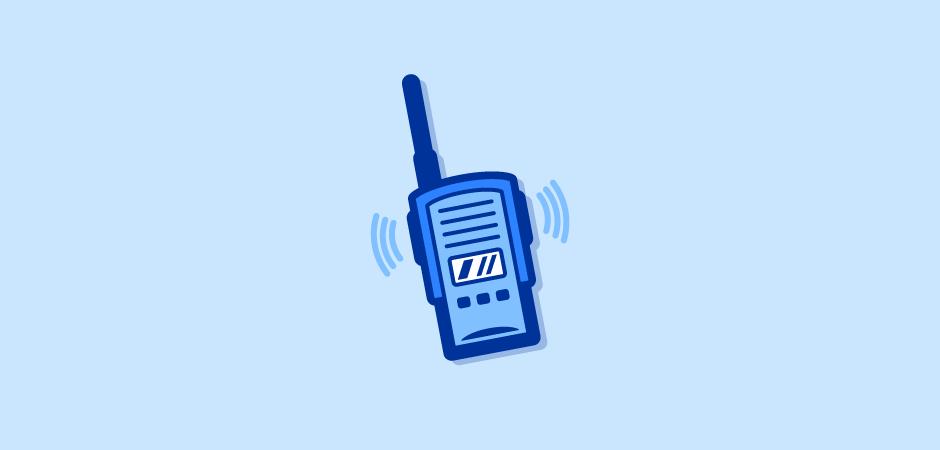From Soft Skills to Power Skills: Prioritizing Communication in PT Treatment Plans
Strong communications skills are powerful tools for PTs looking to build trusting relationships with patients both in and out of the clinic.

Subscribe
Get the latest news and tips directly in your inbox by subscribing to our monthly newsletter
I recently attended a conference where I was presenting on the topic of clinical performance. It’s widely understood that the physical therapist's ability to create a therapeutic alliance with patients will result in better clinical outcomes. Successful PTs and clinical teams recognize the power of connecting with the patient and implementing systems to keep patients engaged.
So, while preparing for my talk, I wasn’t surprised to uncover research that examined physical therapist traits that indicated positive professional performance. Researchers found that employers rate a physical therapist's communication skills as among the most important reflection of high clinical performance (Cook et al., 2018*). This brings me to what I’d like to discuss here: why communication is the key to building better patient relationships, driving higher engagement, and promoting better outcomes.
Communication: The Key to Connection
Communication skills are powerful. While we often don’t think of it this way, communication is the foundation of all human interaction. Our social brains are designed to communicate as it links us together with purpose. When communicating in person, we transmit signals of our thoughts and emotions through our words and body language. With a sophisticated process that involves our brain’s coordination of facial muscles, body position, words, and vocal tone, we connect. Our brains interpret these signals from others and provide meaning to the engagement.
Redefining “Soft Skills”
During the conference, I was at the WebPT booth sharing the content of my presentation to a colleague. I was explaining that while many PTs have a toolbox filled with technical or “hard skills,” my interest is in teaching physical therapists how to get better outcomes by integrating the evolving science and practice of “soft skill.” She nodded in agreement and promptly added, “they aren’t soft skills, they’re power skills.” Boom! Mind blown!
Communication is how to create and maintain relationships and is the way in which we establish the stage for things to happen between people and within groups (bad or good). I suspect you know what “good” or “bad” communication feels like.
Someone with great communication skills can guide someone toward a result. For example, an effective sales person can talk in a way that highlights our desire to purchase something. A waiter at a restaurant can describe a menu in a way that heightens our desire for a meal. And of course, how a healthcare provider communicates with a patient can impact the degree to which the patient “owns” the treatment plan.
Power Skills: A Necessity for PT Treatment
A therapist with well-trained “power skills'' is more likely to establish rapport with a patient, and help them feel comfortable and welcome. They are more likely to recognize the patient’s emotional state and connect in a way that builds trust and creates a therapeutic bond. They are more likely to determine what really matters to the patient and help the patient recognize the value of their service. Power skills are used to build a therapeutic relationship that increases that likelihood that the patient will complete a course of care.
Power skills are more than communication skills. They include verbal and nonverbal elements of: communication, rapport, emotion regulation, reflective functioning, perspective shifting, empathy, active listening and precision language to name a few. While these skills are prevalent in psychology, rehab therapists have only recently recognized their value in clinical outcomes.
Power Skills in Action
The questions you ask and how you ask them will influence how the patient values your relationship and the treatment experience. Often we can use presuppositional language to help prime the patient’s brain for a successful encounter.
Picture this: A therapist greets a patient at a follow-up visit, “Hi, Ms. Smith. How is your pain today?” While this is important information, it may not be how you want to start a treatment session. What if you started the session by setting your mind to connect with the patient, both expressing and stating, “It’s great to see you! What progress have you noticed since our last session?” This tact presupposes that some progress has been made and invites the patient to look for ways in which they’ve made progress.
Now, some patients may say “None! I’m worse.” Here you will again use power skills by first sensing and connecting with the patient’s emotion with an empathy gesture and carefully exploring the specifics of the patient’s experience with open ended questions. For example, “Ah, I’m sorry to hear that, tell me more.” This connect and explore approach allows you to listen carefully to the emotions and the content of the patient's perception. When done well, the patient will feel heard and valued, sensing that you’re truly attending to their concern.
At this point, once you connect and understand the patient, you can use your storyteller skills to help them understand how their current status and frustration relates to the overall treatment plan. To maintain trust in you and the treatment plan, it is critical for the patients to understand what they are experiencing at all points of the therapeutic encounter. Your power skills will ensure there is understanding and trust in the process.
Patients want to feel connected to their healthcare provider—even beyond their treatment encounters. Findings from WebPT’s and Clinicient’s recent Patient Experience Report shows that patients want communication from therapists between sessions. Patients are in the process of healing, and they have chosen us to be their guide in this process. So, when you reach out to them between sessions, you strengthen the relationship and increase the likelihood that your patient stays engaged with their treatment plan. Fortunately, modern technology can enable you to scale relationships with your patients, helping bridge the gap between in-person and at-home care.
In summary, our success with patients depends upon more than the “hard skills'' we learn in school and in most continuing education courses. While our technical skills are important, we need to reconceptualize soft skills and fill our clinical toolbox with “power skills'' to keep patients engaged with their treatment plan and on track to achieve optimal outcomes.
*Cook, C., McCallum, C., Musolino, G. M., Reiman, M., & Covington, J. K. (2018). What traits are reflective of positive professional performance in physical therapy program graduates? A Delphi study. Journal of allied health, 47(2), 96-102.








